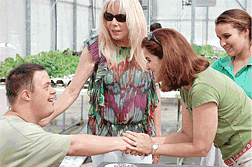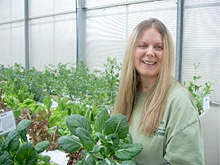By Joan Leotta
You’re running from one town to the next, but your food and water supplies are low. You hope to see a friendly face, because you’ll need some help soon. You spot someone in the distance when all of a sudden you realize — Oh, no! It’s an orc! And you die. Luckily, if you spend some gold and wait some time, you’ll come alive again.
This may not sound like your reality, but perhaps like a fun and immersive video game. However, like many other aspects of daily life, some video games are unavailable to many people because of their disabilities. One organization, the AbleGamers Foundation is looking to change all that by giving equipment to disabled gamers in need; promoting games that encourage mental, social and physical development; providing reviews of video games that highlight accessibility features, and making noise in the gaming world about the need to make video games available to all.
AbleGamers’ ongoing grants program provides equipment and funding that gives severely disabled individuals access to previously inaccessible gaming experiences. Steve Spohn, Editor-in-Chief of AbleGamers, notes that by doing so, the Foundation can translate gaming assistance into life improvements for people with disabilities.
“For example, someone who is in a facility, VA Hospital, or homebound with no possibility of going out into the world to socialize with others and unable to use traditional gaming peripherals, such as an Xbox controller, by being introduced to assistant technology will be able to play videogames in a multiplayer environment,” he says. “This means that person’s life is instantly transformed by the possibility of making friends, strangers to interact with, and even responsibilities in game worlds that have an impact on others.”
AbleGamers Foundation statistics show that more than half of the 6o million people with disabilities in the United States use videogames to increase the quality of their lives and make friends. According to David Morrison, a gamer, disability blogger, and columnist with the Wilmington, NC, Star News, “Accessible gaming offers people with disabilities a common activity that can increase social and fine motor skills while having fun at the same time.”
Like all forms of play, gaming can prepare one for real life. Sarah Giese, a game writer with a degree in communications, says, “Nearly all videogames stimulate mental development to some degree, whether it is critical thinking and decision making or improving the eye’s tracking skills.” She adds that gaming is being used more and more to teach, citing the fact that the U.S. Army has developed several games used for training recruits and psychiatrists are also using games to for help returning soldiers recover from PTSD.
Able Gamers Foundation provides a free database of mainstream game titles with reviews aimed at accessibility. The Foundation also works to raise awareness of the value of gaming by encouraging disabled returning war veterans how video gaming can reconnect them with friends.
Giese further notes that gaming forums “create a unique and complex subculture” that brings all kind of gamers together. In these forums, “disabled persons can interact freely with other gamers who are disabled and with those who aren’t,” she states.
Transition from play to real life
Some videogames provide a safe environment to assist people with disabilities manage new routines. For example, Spohn says, “Videogames can teach life skills and give people a way to practice daily activities without the risks associated with the activity. For example, one company called VTree makes virtual world games were you can practice crossing the street, interacting in an apartment or living on your own. This is particularly useful for those in the autism community that would like practice or to learn life skills that are vital to being independent.”
Not only are games like VTree now being designed that are specifically aimed at people with disabilities, but there are also a growing number of cell phone and table apps (see below). While some are used as games, others are more overt learning, teaching, or scheduling tools. Just-for-fun games now being marketed to disability communities include In the Pit for people with visual impairments.
Accessibility and choice of platforms
However, the most desirable aspect of gaming for many is the opportunity to play in a MMP (massively multiplayer) universe, or at the very least, to play the same games that are popular to everyone. That is why AbleGamers maintains a broad database of games and their accessibility statistics. While some games are easy to use for the mobility-impaired, for example, others might not have captioning for the deaf. Giese notes that “it depends upon which the type of disability that the game is designed to work best with.”
Of course, not all game adaptations are the same. The gaming needs of someone who is colorblind differ from those of someone with fine motor impairments. Spohn explains, “Disabled gamers have varying degrees of need for options to help them game. Some people only need the ability to change what button does what action, what color objects are, or the ability to read the audio elements of the game. Other gamers need more help in the way of advanced options such as slowing the entire game down for those with dexterity, precision or cognitive issues.”
Because AbleGamers assists in providing technology to would-be gamers, the Foundation has become expert on the pros and cons of various gaming equipment. Spohn says that “the PC is more accessible than any console because of the availability of peripherals on the computer.” Consoles do not have the same flexibility as a personal computer when it comes to the addition of assistive technology.
Of the various console options, Morrison says, “It is up to the consumer to find what works for them.” He likes Wii and Xbox because to him, they are “the best in terms of accessible platforms with a relatively easy user interface and online gaming.”
Gaming is not the only way that technology is reaching into the disability community to make life easier. An area where technology is making conscious efforts to make life activities easier for people with disabilities, often with game like fun, is in the area of applications for mobile phone and tablet devices. These “apps” as they are called are often directed toward specific disabilities.
The number of apps for smart phones and tablets is multiplying exponentially. Many well-known apps are games, but more and more are being developed to directly help people with special needs. For example, during Autism Awareness Month (April), makers of the Nook tablet advertised a wide variety of social applications that can improve interpersonal interaction for people with autism.
Increasing Accessibility on the Internet
Raymond Sonoff, proprietor of Sonoff Consulting Services, has consulted at Verizon Communications and many other clients to make the Web more accessible. Sonoff notes that making games—and all websites—more accessible is primarily a matter of FUN. In his acronym, “F” stands for functional, meaning that everything on the website works—no broken links. “U” stands for useable: that the site actually does perform all of its intended functionalities in a straightforward manner, and it is laid out logically. “N,” stands fornavigable and indicates ease of getting around including, on a game, finding the buttons to make plays and conveniently selecting paying options.
Morrison notes that what is accessible to one person may not be accessible to another, but that ”the bottom line is that gaming is meant to be fun. It may take time to find something that is right for you but once you do, settle in and let the games begin!”
Find AbleGamers online…so you’ll be able to game!
The AbleGamers Foundation gives equipment to disabled gamers in need; promotes games that encourage mental, social and physical development; provides reviews of video games that highlight accessibility features, and makes noise in the gaming world about the need to make video games available to all.
New York City Mayor Michael Bloomberg recognized the work of AbleGamers with an award on the occasion of the twentieth anniversary of the Americans with Disabilities Act. The group operates three websites to fulfill its mission. The group also sponsors an Accessibility Arcade, where able-bodied and disabled gamers can play together.
These sites are:
- The Game Accessibility database (www.gameaccessibility.org) provides reviews and information on adaptive game features.
- The AbleGamers site (www.ablegamers.com) provides information for the gaming community.
- The main page for the AbleGamers Foundation (www.ablegamers.org) has an area devoted to the Path to Games Accessibility Project (www.ablegamers.org/pathtoaccessibility.html) which puts together game-writing leaders, technology vendors, artists and testers to identify and state what can be done to enhance the ability of people with disabilities.
Edited by Mary-Louise Piner.
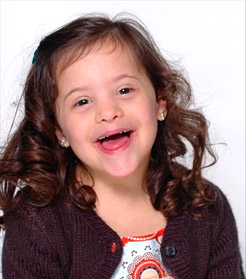

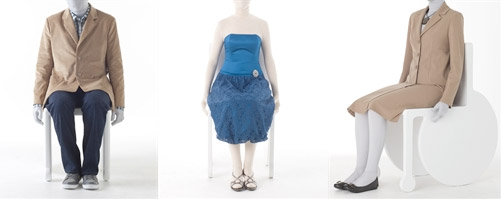
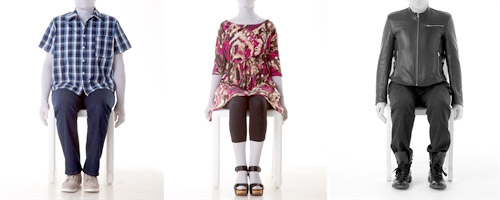
 Sophie Morgan, a British artist, disability rights activist, and wheelchair user, is a spokesperson for IZ Adaptive Clothing. Creator of the IMperfect campaign, Morgan also models and has contributed one of her art pieces for the first
Sophie Morgan, a British artist, disability rights activist, and wheelchair user, is a spokesperson for IZ Adaptive Clothing. Creator of the IMperfect campaign, Morgan also models and has contributed one of her art pieces for the first 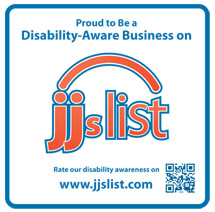 Looking to develop job and/or advocacy skills? Planning an outing? Need to go shopping? If you live in the Chicago area, there’s a web-based review site that can help you find disability-friendly businesses that suit your needs.
Looking to develop job and/or advocacy skills? Planning an outing? Need to go shopping? If you live in the Chicago area, there’s a web-based review site that can help you find disability-friendly businesses that suit your needs.